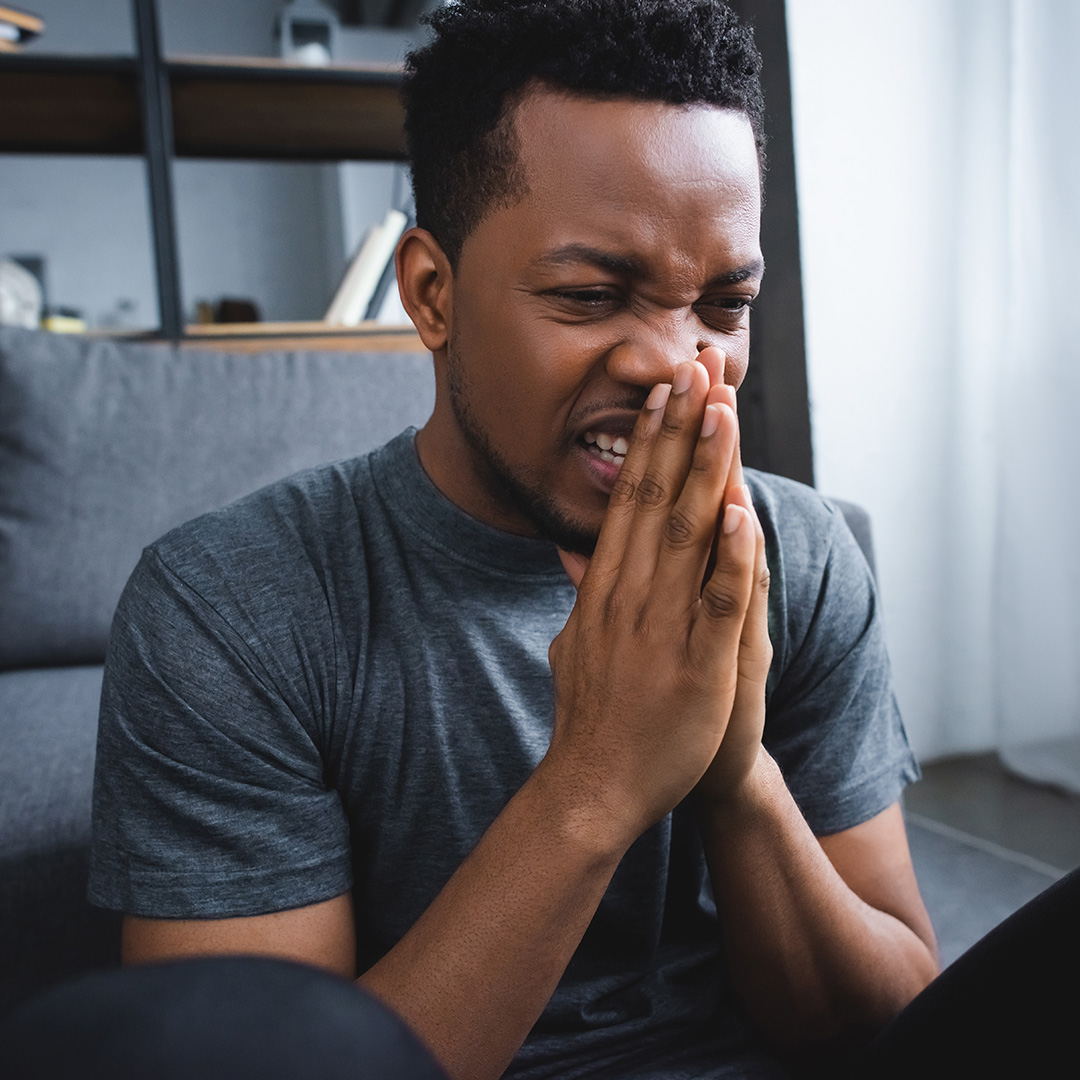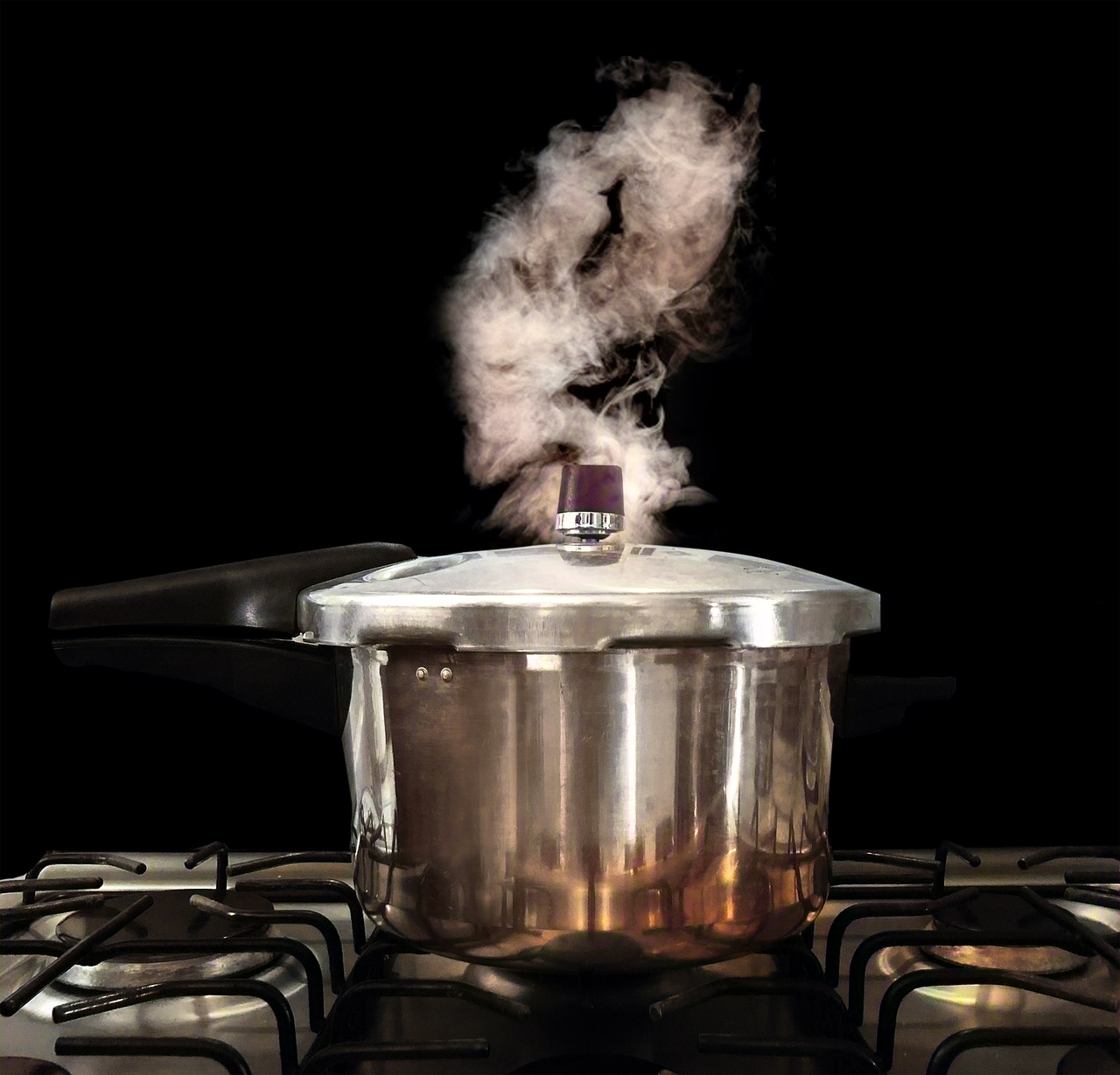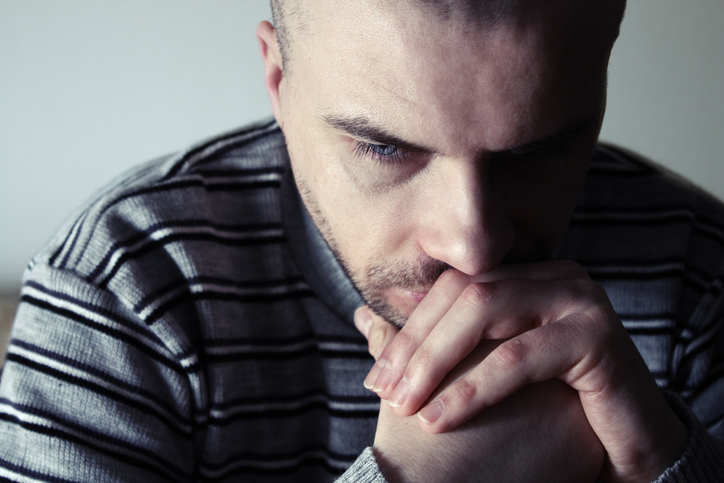Intercultural Relationships: Challenges, Keys and Tips for Success in a Couple
Intercultural «romances» have existed since the dawn of our species. Over 100,000 years ago, hybridization between Neanderthals from Eurasia and Homo sapiens from the African continent was already taking place. The significant differences between these two human species—both in physical appearance and in intellectual and behavioral aspects—were not enough to prevent their intermingling and relationships. Throughout human history, intercultural unions have continued, with varying levels of acceptance, some widely known, such as the relationships between Cleopatra and Julius Caesar or between La Malinche and Hernán Cortés.
Today, we can define intercultural couples or «intercultural intimate relationships» as those formed by individuals from different cultural backgrounds. Cultural differences can encompass a broad range of aspects, including nationality, ethnicity, language, religious beliefs, and more. In an intercultural relationship, each partner brings their own unique perspective, shaped by their cultural background, regarding concepts such as relationships and family, communication styles, values and expectations, customs and traditions, displays of affection and intimacy, sexuality, and more.
In many societies, the rate of intercultural romantic relationships is increasing, including in Spain, where, according to the National Institute of Statistics, around 18% of couples who marry are intercultural. This increase in recent decades may be a result of globalization and technological advances, which are creating increasingly multicultural and heterogeneous societies.
As intercultural relationships become more common, we wonder how they compare to «intracultural» relationships, in which both partners share the same culture. Studies often compare aspects such as relationship success rates and quality, which are linked to factors like commitment and satisfaction—important elements for relationship stability and well-being. Other studies approach the topic from the perspective of attraction and the factors influencing partner selection.

Attraction and Partner Selection
What attracts us to another person? Several theories attempt to answer this question. Some emphasize the principle of similarity, which suggests that we are more attracted to people who share similar values, education, intelligence, and even appearance. Some studies also suggest that, on an unconscious level, we seek partners with familiar traits, which tend to attract us more. This familiarity can make us feel safer, more comfortable, or recognized.
On the other hand, there is the myth of the «soulmate.» The idea that somewhere in the world there is one person who complements you perfectly dates back to Ancient Greece, appearing in the writings of Aristophanes, a contemporary of Socrates. In this vein, some theories propose that opposites attract, such as Robert F. Winch’s «Theory of Complementarity,» which argues that people are drawn to those with different characteristics that complement their own. For example, an introverted person might find an extroverted personality attractive, just as an impulsive person might be drawn to someone more reflective. Attachment Theory also suggests that people with an «anxious attachment» style tend to be attracted to those with an «avoidant attachment» style, and vice versa.
Although similarity-based theories have received greater scientific support, there is evidence that people are often attracted to what they lack (in terms of personality), as well as to novelty and even a sense of exoticism. However, the very differences that initially attract people can also lead to conflicts and marital difficulties, ultimately reducing satisfaction and increasing the likelihood of romantic breakdown.

Therefore, one might assume that intercultural intimate relationships are more prone to dissatisfaction or failure. Historically, and according to past studies, this was true—but things are changing. More recent research suggests that intercultural romances can be just as satisfying and committed as intracultural ones.
At the heart of any relationship is intimate communication—the glue that holds two people together. However, in intercultural relationships, communication takes on a nuanced dimension. Different cultural norms regarding verbal and nonverbal expression can significantly influence how partners perceive each other.
For example, sincerity and assertiveness are valued in some Western cultures as signs of trust and honesty, whereas in many Asian cultures, indirectness, avoidance of direct «NOs,» and subtle communication are considered signs of respect and emotional intelligence. When these two seemingly opposite styles clash in an intimate setting, misunderstandings and frustration can easily arise. A simple expression of frustration in one culture may be perceived as conflict in another, potentially leading to emotional distancing.
Challenges and Keys to Success
That said, these challenges are not insurmountable. So, what factors contribute to a successful intercultural intimate relationship?
Psychologists and relationship experts—myself included—may not fully grasp all aspects of this dynamic. While similarity is an important factor, perhaps it is not so much superficial traits like race or country of origin that matter, but rather deeper compatibility in personality, values, and attitudes, which could reduce conflict. However, prioritizing similarity might also mean less learning and personal growth. If we combined lower similarity with a high degree of openness and adaptability, wouldn’t that be ideal?
In fact, some research suggests that individuals who seek romantic partners from different cultures tend to score high on a personality trait known as openness to new experiences, meaning they are more receptive to novelty.
Another relevant factor concerns the mixing of specific cultures. For instance, studies show that relationships between Black and White individuals have a lower likelihood of success compared to those between Hispanics and Whites. This may be due to historical and social factors, such as discrimination or the presence of racism. A couple that might seem highly compatible on the surface can still be affected by external pressures that ultimately lead to their separation.

In my view, when intercultural differences are approached with mutual respect and openness, they can become valuable opportunities for learning and personal and relational growth. Both partners can discover new ways of expressing affection, learn different conflict-resolution strategies, and deepen their understanding of each other. Navigating cultural differences can strengthen a relationship and make both individuals more empathetic and flexible in other areas of life.
Another layer of complexity in intercultural intimate relationships stems from differing cultural values and expectations. Values related to family, gender roles, traditions, and even religion play a crucial role in relationship dynamics. In more collectivist cultures (such as Latin American or Spanish cultures), family is often seen as a central unit, with strong ties and intergenerational obligations. A person from a collectivist culture may expect their family to be involved in major life decisions, while someone from an individualistic culture may see such involvement as intrusive. Similarly, differences in gender role expectations can create tension, especially if one partner comes from a society with traditional norms and the other from one with more egalitarian views.
These differences can lead to conflicts, especially when societal and familial pressures come into play. Some families or communities may disapprove of intercultural unions, adding external stress to the relationship. Intercultural couples often face not only their personal differences but also the judgments and expectations of others—and, at times, social marginalization or exclusion.
However, couples who successfully navigate these challenges often develop a stronger bond as they work together to overcome both internal and external difficulties. Over time, social perceptions of intercultural relationships are also evolving in a more positive direction, fostering greater acceptance among families and communities.
The Role of Adaptability and Openness
The success of intercultural intimate relationships largely depends on the adaptability and openness of both partners. Openness involves flexibility and a willingness to engage with the other person’s culture, which can pave the way for mutual understanding. Learning about each other’s backgrounds, languages, customs, and values can help bridge many differences. While it is impossible for one partner to fully understand or adopt the other’s culture, showing curiosity and respect is a powerful way to validate the other’s identity.
Moreover, these relationships require an active commitment to «cultural learning.» This does not mean a rigid adherence to one set of cultural norms or another, but rather a shared approach based on openness, commitment, and negotiation of values. One partner may choose to adopt certain cultural practices from the other, or both may agree to create new traditions that blend aspects of both their cultural backgrounds.
This hybridity or fusion can enrich the relationship, offering unique opportunities to create a shared and unique identity that honors the heritage of both partners.

Identity and Belonging
Intercultural relationships also raise deeper questions about identity and belonging. Partners may experience changes in their self-perception, sometimes feeling «between two worlds,» struggling with social expectations, or feeling that they don’t fully belong anywhere. Children of intercultural couples, in particular, often face the challenge of navigating multiple cultural identities and feeling that they don’t fully fit into any of them. However, this can also be enriching. Growing up in a multicultural environment offers a unique perspective, often fostering adaptability, empathy, and a broad understanding of the world.
Despite the challenges, intercultural relationships can be deeply enriching. They provide opportunities for learning, personal development, and relational growth. The key to their success lies in openness, flexibility, and effective communication. Those who manage to overcome cultural barriers often develop a deeper understanding of each other, thereby strengthening their bond. In an increasingly globalized world, intercultural relationships not only challenge borders but also demonstrate the immense potential of human connection.
About the author
Guillermo Gabarain Beristain is a Psychologist and Coach at SINEWS MTI with more than 15 years of experience, licensed in both Spain and the USA to practice as a psychologist, bilingual and with international experience. Trained in scientifically validated methodologies, such as Cognitive Behavioral Therapy, Solution Focused Therapy, Gottman Method of Couples Therapy, Crisis Prevention and Intervention, as well as in Humanistic and Systemic approaches. His main activity is focused on working with adults and couples, and he is specialized in the treatment of depression and anxiety disorders, complex grief, adjustment problems due to migration, substance use disorders and addictions, and couple problems.
Division of Psychology, Psychotherapy and Coaching
Psychologist
Adults and couples
Languages: English and Spanish
How to Manage Panic Attacks
As a patient of mine described it, «experiencing a panic attack can be an overwhelming and terrifying experience. It’s like suddenly being engulfed in a whirlwind of intense emotions and physical sensations, without any warning or control over what’s happening to me. The onset is often rapid, and it feels like my heart is pounding out of my chest, almost as if it might explode.
My breath becomes shallow and rapid, and I struggle to catch my breath, making me feel like I’m suffocating. It’s like my body is on high alert, and I’m convinced that something terrible is about to happen, even though I can’t pinpoint exactly what that something is. My mind races with anxious thoughts, and I find it nearly impossible to focus on anything else. It’s as if my thoughts are running wild, and I’m trapped inside this chaotic mental state.
Everything around me seems to blur, and I might feel detached from reality, almost like I’m living in a dream. At the same time, my senses become hypersensitive, making even the smallest sounds or movements feel overwhelming. The world becomes a frightening place, and I just want to escape from it all.
Physically, my body might tremble uncontrollably, and I might break out in a cold sweat. Nausea can also set in, adding to the discomfort and distress. It’s like a vicious cycle – the more my body reacts to the panic, the more terrified I become, which only fuels the symptoms even further.
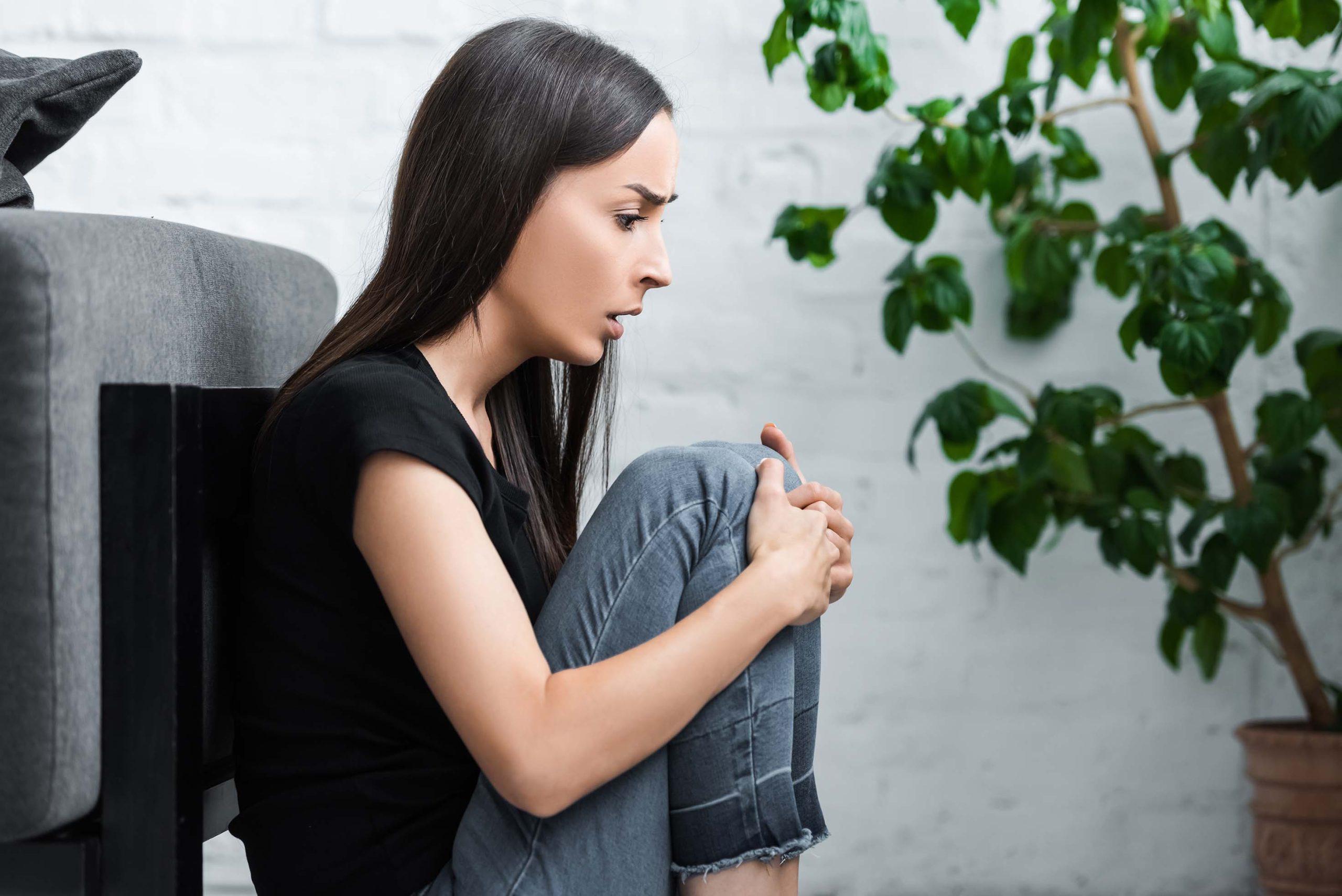
The whole experience is utterly exhausting, both mentally and physically. After the panic attack subsides, I’m left feeling drained, as if I’ve just run a marathon. I might also feel embarrassed or ashamed, especially if the panic attack occurred in public, and I worry about others judging me for not being able to handle my emotions.
Overall, having a panic attack is an indescribable rollercoaster of fear, confusion, and desperation. It’s like being trapped in a storm of emotions and sensations, desperately seeking calm and safety amidst the chaos.»
What is a Panic Attack or Panic Episode?
Panic attacks are often unexpected episodes of intense fear with feelings of lack of control, discomfort, or terror, frequently associated with a sensation of dying. These episodes can appear for no reason or after a stressful situation, and usually evolve rapidly in a matter of 10 minutes or even less time. While the peak of intensity can be fairly quick to arrive, the average duration of a panic episode is between 5 and 20 minutes, sometimes lasting longer, even hours.
Although not all people experience it in the same way, the most common symptoms are palpitations (tachycardia), sweating, hand trembling, leg weakness, nausea, abdominal discomfort, dizziness, headache, chest tightness, choking sensation and suffocation. In more extreme cases, vomiting, fainting, or states of great confusion and depersonalization may occur. As in many cases it tends to occur unexpectedly, people have difficulty recognizing it as a symptom of anxiety and may think that they are suffering from a heart attack or other serious medical problem.
At a biological level, a panic attack is a «normal» response of our organism, but in an inconvenient situation. Let me explain, in an emergency situation or serious danger, our body launches the «Flight, Fight or Freeze Response». This means that, faced with a dangerous situation, our brain sets in motion a survival mechanism that involves the release of certain substances (mainly adrenaline and cortisol), which first activate our heart, causing it to beat faster (palpitations/tachycardia). This causes more oxygen to reach the muscles, which would allow us to run away or defend ourselves. At the same time, to supply the increased need for oxygen, our breathing becomes faster and/or deeper (hyperventilation). This mechanism also allows us to reinforce or protect some vital organs and respond better to the situation.
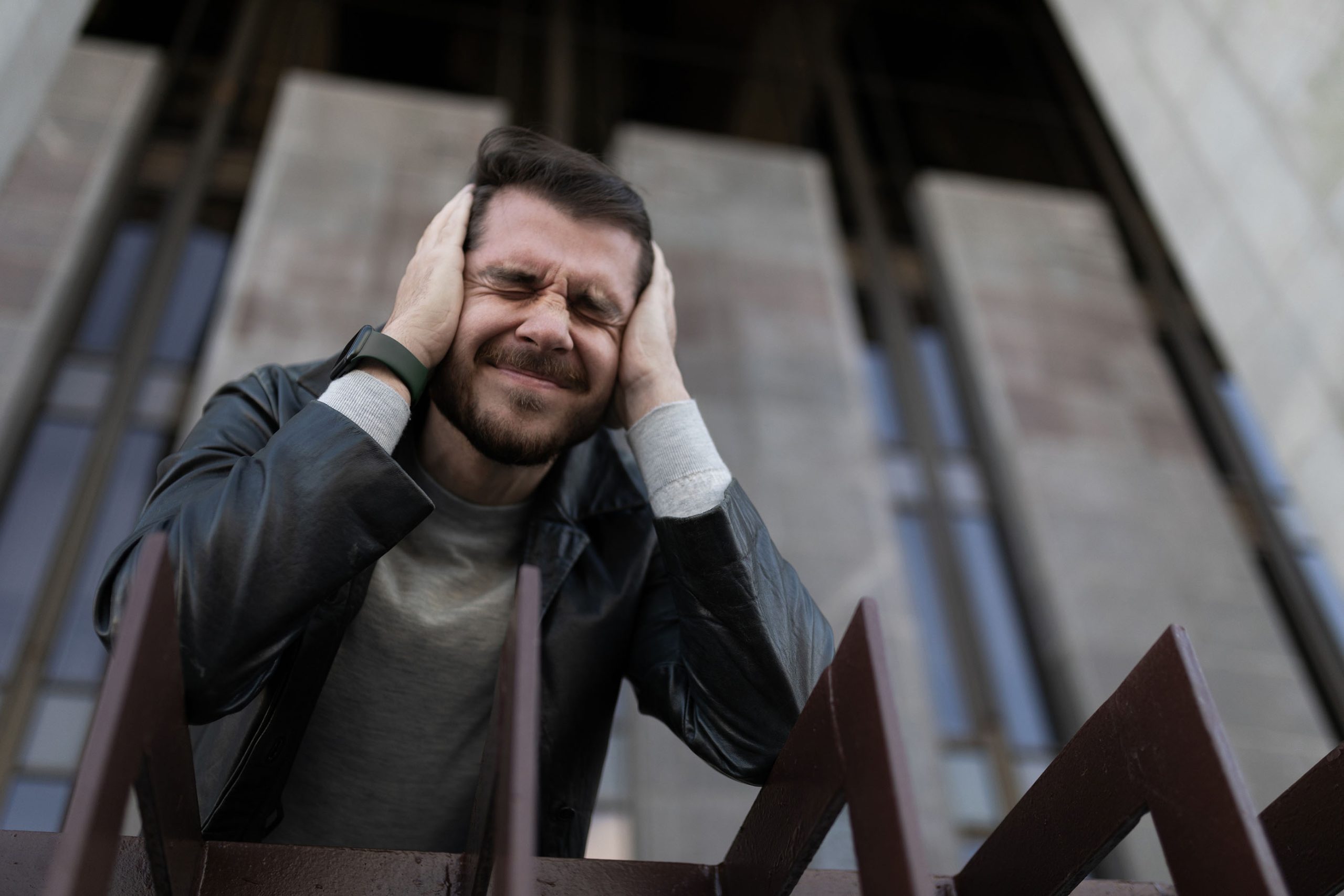
The problem with panic attacks is that the brain triggers this «fight, flight or block response» in situations where it is not really necessary, which deeply disconcerts us and causes us to feel as if we are going crazy or losing control.
What can I do if I suffer from Panic Episodes?
Many patients who suffer a panic attack for the first time usually call an ambulance, but it is usually not necessary to go to the hospital. Although extremely distressing and unpleasant, panic attacks are usually not dangerous and do not require hospital treatment. To manage panic episodes without pharmacological help, different guidelines can be followed, some at a cognitive level and others at a behavioral level.
First of all, when you start to feel the first symptoms of a panic attack (palpitations, muscle tension, pressure in the chest, sweating), it is very important to do a calming mental exercise. In other words, when the episode is triggered, it is very normal to think things like «I am going crazy», or «I am having a heart attack», or «I am going to lose control», which make the symptoms worse. It is very important to tell ourselves more positive messages such as, «it is just an anxiety episode, «it will pass soon», or «I am not going to die, far from it».
It is also important to give ourselves time and space to allow the anxiety (excess adrenaline and cortisol) to dissipate. To do this, certain behavioral guidelines can be performed, such as:
- Stop what you are doing for the moment.
- Find a quiet space or go for a leisurely walk. Being in a quiet environment can help reduce the intensity of the panic attack.
- Do a breathing exercise, trying to breathe in slowly through your nose, holding your breath for a few seconds and then breathing out slowly through your mouth. This will help regulate your breathing and bring a sense of calm.
- Keep the attention on the breathing, rather than on the symptoms or negative thoughts, and focus on pausing the breathing as much as possible. In this way, we will be able to lower the heart palpitations.
- Use positive and reassuring affirmations, such as "This will pass", "It's just a panic episode", or "Of course I can handle this!
- Give yourself plenty of time to regain your composure, rather than rushing off.
- Seek support from someone you know and trust, and tell them what is happening to you. Sometimes, sharing your feelings can help. If you are alone, calling or texting someone you trust can also help. But remember that the important thing is to manage the panic yourself.

A panic attack is like a «brain earthquake» so if it happens once, it can happen again. It is very likely that the panic episode itself is a symptom that we are going through a period of increased stress, which has our system hyperactivated. Therefore, it is highly recommended, on the one hand, to stop and think about what is going on in our lives and how we can reduce our stress level (self-care).
On the other hand, it is highly advisable to seek psychological and even psychiatric help, because if we do nothing and the stress level remains or worsens, the probability of further episodes rises. And if you are experiencing panic attacks frequently or they significantly affect your daily life, definitely see a mental health professional as soon as possible. Therapies such as Cognitive Behavioral Therapy (CBT) can be very effective in learning to manage panic attacks and anxiety.
About the author
Guillermo Gabarain Beristain is a Psychologist and Coach at SINEWS MTI with more than 15 years of experience, licensed in both Spain and the USA to practice as a psychologist, bilingual and with international experience. Trained in scientifically validated methodologies, such as Cognitive Behavioral Therapy, Solution Focused Therapy, Gottman Method of Couples Therapy, Crisis Prevention and Intervention, as well as in Humanistic and Systemic approaches. His main activity is focused on working with adults and couples, and he is specialized in the treatment of depression and anxiety disorders, complex grief, adjustment problems due to migration, substance use disorders and addictions, and couple problems.
Division of Psychology, Psychotherapy and Coaching
Psychologist
Adults and couples
Languages: English and Spanish
The Pressure Cooker Metaphor: Understanding Stress, Symptoms and the Importance of Self-Care
Metaphors can be tremendously therapeutic; they help us to visualize, to take perspective, and to recognize, realize or understand aspects that we were not aware of. A metaphor, as understood by Friedrich Nietzsche and José Ortega y Gasset who defended its hermeneutic character, helps us to describe the perceived reality with symbolic language, which is more unifying and understandable by more people. The metaphor also connects brain impulses between our linguistic and visual neurons, which has a beneficial side effect, which is to «activate» memories, mental schemes, in other words, to generate new perspectives.
One of my favorite metaphors at a therapeutic level, which is more of a «theory» because of its extension, I call it the «Pressure Cooker Theory». Over the years, I have been formulating and adding concepts, variables and some scientific discoveries, which have made it more of a «theory» than a simple metaphor. My purpose in this article is to share this small resource, which I believe has been very useful in helping my clients understand the following questions:
- What is stress and what causes it? Referring to our metaphor, what makes us raise the temperature of the pot, and generate a lot of pressure inside?
- How does our brain communicate to us that it is stressed? Here we will use the "safety valve" of the pot to symbolize the mechanism that warns us that the pressure is too high and therefore allows steam to escape.
- Finally, what can we do to lower the temperature and reduce the pressure in the pot? The purpose is not to "turn off the pot", but to learn to regulate it, on the basis that there are many strategies in our hands that allow us to "lower the temperature", to live with acceptable levels of stress, and to take care of our state of well-being and satisfaction.

What is stress and what causes it?
To begin with, as many of you may have already guessed, the «pot» itself refers to or symbolizes our most precious and complex vital organ, the brain. The distinction of «pressurized» highlights the capacity of humans to harbor levels of pressure or stress, both of intrapsychic and environmental origin.
Historically, it all began with the Stress Theory of Hans Selye, a professor and researcher considered the «father of stress», not because he invented it, but because he described it from a biological perspective. According to Selye, stress is the response of our organism to the variations, changes and adversities of life, that is, our physiological responses of adaptation to the environment. In the face of situations that we perceive as adverse, in the face of threatening, unsolvable or uncertain situations, our brain sets in motion what Dr. Seyle called the General Adaptation Syndrome (GAS), and we will use an example to understand it better.
Imagine that for a moment you walk calmly out of your room and encounter a lion. Naturally, your brain attributes a dangerous note to the situation and consequently, your amygdala, your pituitary gland and your adrenergic glands go into overdrive and trigger the stress response. Basically, they release adrenaline and cortisol, which make your heart beat faster, so that more oxygen and nutrients reach your muscles and vital organs, so that if you have to run away or protect yourself, you do it more effectively. Furthermore, your breathing becomes faster and deeper, your stomach seems to close up, and other changes that we usually ignore because we have a lion in front of us.
But so far we have only talked about how an external stimulus can trigger this General Adaptation Syndrome, or stress response. The reality, however, is that as Robert M. Sapolsky explains in his book «Why Zebras Don’t Get Ulcers», our brain is an extraordinary organ, and is capable of carrying out very complicated cognitive processes and functions on a daily basis. In other words, it helps us survive. However, unlike some animals, such as zebras for example, the human brain can carry out these complex processes repetitively or inappropriately. And that is why these processes can sometimes do more harm than good, if we allow them.
It is worth noting that our body usually responds positively or in tune with environmental stimuli and without negative consequences: this is what we call «good stress». At other times, however, our organism is not able or does not know how to adapt to the environment, since the required responses are unknown, too intense or too prolonged and the demands exceed our adaptation strategies. This is what we call «bad stress» (stress, in general).
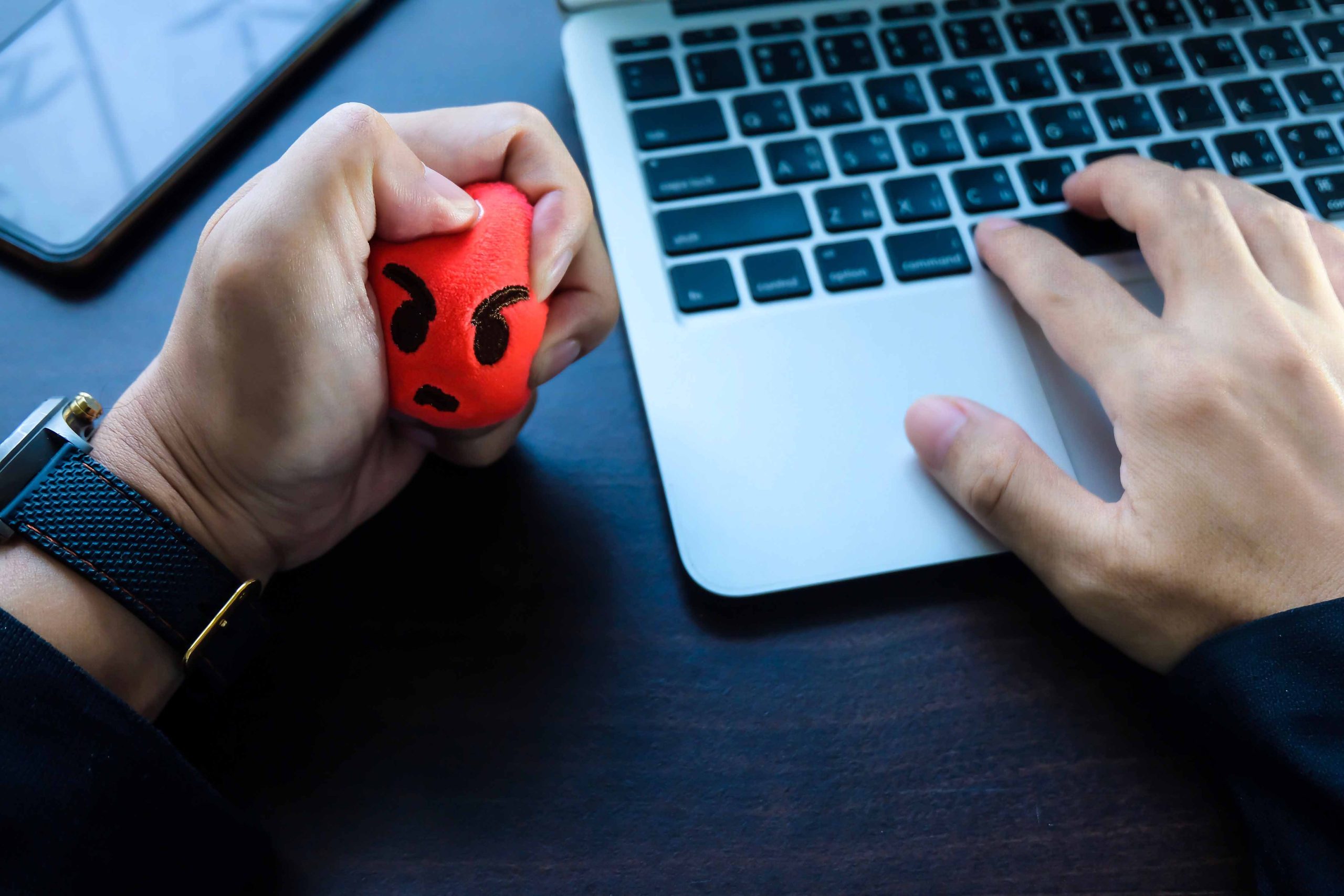
Once we understand that our «pot» (brain) can overheat and harbor stress, what makes the pot hot, or how do we heat our pot, or what causes us bad stress? There are many internal and external stimuli that can cause us to overheat our pot. I tend to summarize them into four «heating factors»:
- The " I Should": this first pot-warming factor is of an internal or cognitive nature. I call it the "I Should" because it refers to all those expectations, both self-imposed or received from others (e.g., parents, society, etc.). We may be aware of these "I Should", but I believe most often we are not. They are part of our "internal noise", I also sometimes call it the "relentless demander", as it is like a voice that often says messages such as, "I should be more successful in my career", "I should be more fit", "I should have studied more". This internal demanding voice can make us very hot, because often, these are expectations that we have not been able to meet or are unrealistic.
- The "I Have To": this heating factor refers to all those obligations, responsibilities and commitments that we have acquired over time and often end up drowning us. Have you ever stopped to make a list of all the "I have to" in a day? I encourage you to do so and assess which are really important, and which are perhaps ways to serve other people, real or imagined.
- Unsolvable problems: negative things happen to all of us, adversities, bad experiences, problems, etc. Sometimes problems come in packs - my grandmother used to tell me that "misfortunes come in packs of three". Sometimes these problems do not have an easy solution, such as a serious illness, noisy neighbors, an unexpected breakup, or a pandemic! All external circumstances require problem-solving strategies, adaptation and this can turn us very warm.
- Change: I am referring to the change that we generate ourselves, out of our own free will, but often, we are not aware of what it entails. For example, after several international moves, I have recently realized how much time and effort it takes me the process of adaptation, which I took for granted. Learning and adapting to another culture, language, customs, establishing new friendships, routines and rhythms, achieving financial and emotional stability and so on and on, takes a lot of effort and time - for me, three years or so, and this can of course generate a lot of overheating. Like moving abroad, there are many other changes we go through - house, job, new school, returning from vacation, etc.
How does our brain tell us that it is stressed?
This question may seem a bit strange, but I think it can provide a very understandable and practical perspective. When a pressure cooker heats up, a lot of pressure is generated inside and consequently the valve opens releasing some of the steam and pressure. When this happens, the valve makes a noise that we all easily recognize, and we quickly run to lower the temperature so that the food does not burn or the pot explodes.
In the same way, our brain, when subjected to high stress loads, sends us «signals», but we often do not recognize them as such, and generally, we do not run quickly to lower the temperature. As I explain to my clients, these signals are gradual, they don’t come all at once, and everyone is different and our brains can give idiosyncratic signals.
If I may engage in some degree of self-disclosure, when my pot starts to get too hot, the first signals it sends me usually include sleep problems (more awakenings, the occasional nightmare). If I ignore the signals and continue business as usual, my pot increases the signals, and in addition to sleep problems, it sends me some headaches and lack of energy. If I still continue to ignore the signals, my pot keeps adding signals, and sends me a series of negative thoughts that make me doubt myself, what I do and who I am. Obviously, if I allow my pot to continue to run hotter and hotter without limit, this can result in increasingly serious and pernicious symptoms.
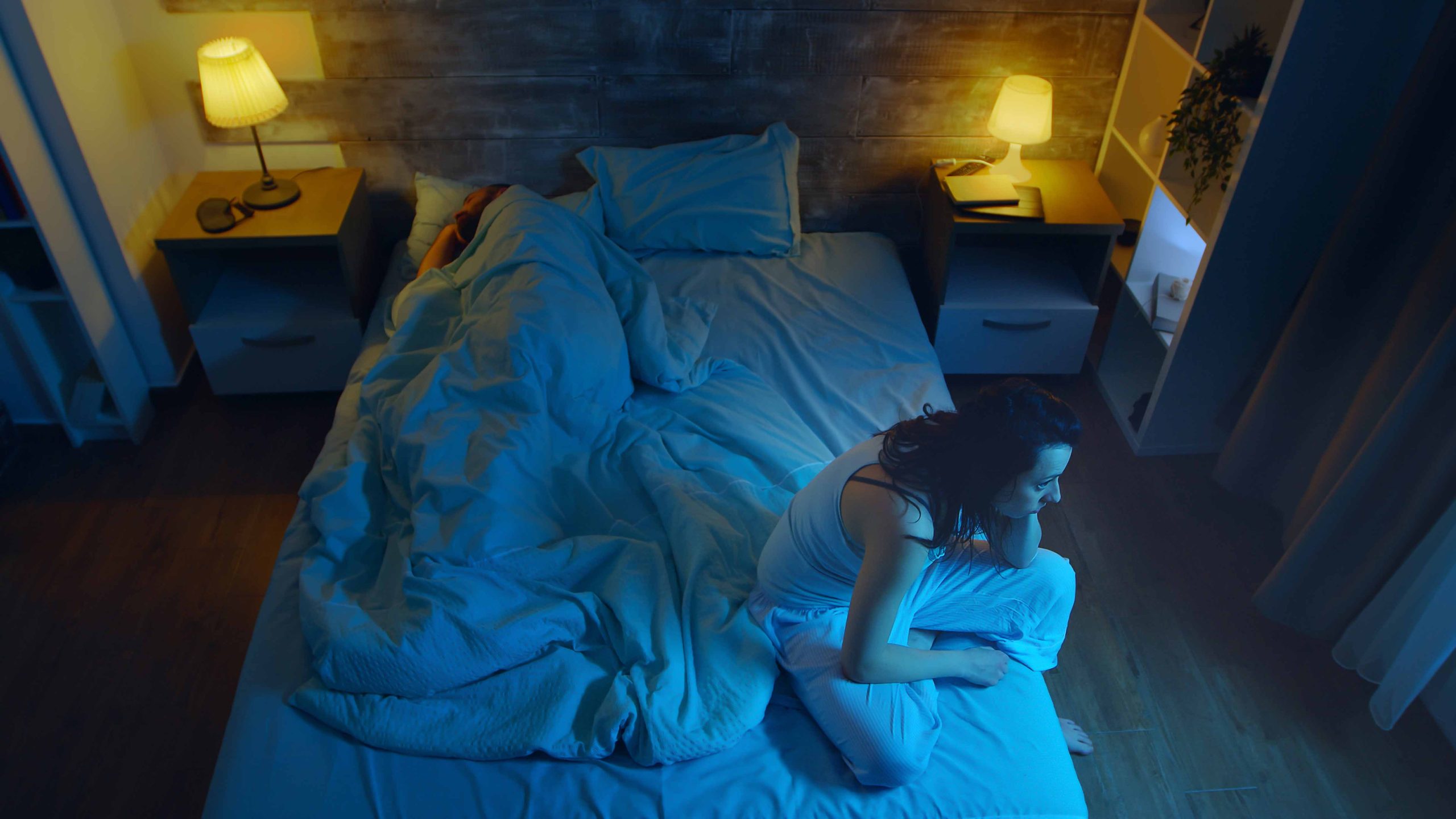
But, as I have said, each person has his or her own idiosyncrasies and must understand and know himself or herself, and know how his or her pot signals that the temperature is too high. Some people are more prone to anxiety or depression problems, others to appetite and eating problems, others tend to disorganization and lack of attention, others tend to paranoia or suspiciousness.
From my point of view, the important thing is firstly, to learn how your pot signals high temperature and pressure, and secondly, acknowledge and become accountable for recognizing these signals and taking care of lowering the temperature of the pot.
What can we do to lower the temperature and reduce the pressure of the pot?
This question can give rise to an infinite number of strategies, which is not the purpose of this article. My purpose is to emphasize the developments that have been made from the field of Positive Psychology and Neuroscience on our ability to generate and manage mental stability and happiness – following our Pressure Cooker metaphor, how to lower the temperature of the pot and keep it as stable as possible.
From a neurobiological point of view, there are certain neurological processes in the brain that are associated to happiness. For example, there are some identifiable structures or nuclei in our brain (i.e., the nucleus accumbens, the tegmental-ventral area, and some areas of the orbitofrontal lobe, insula, medial prefrontal and cingulate) and a series of neurotransmitters, for example, dopamine and serotonin, that are associated with happiness, pleasure and satisfaction.
However, happiness is not a permanent state and cannot be achieved instantaneously. In the field of Positive Psychology and described by Dr. Martin Seligman in the PERMA model, happiness is considered to be a state of subjective well-being that arises from the experience of positive emotions, engagement in meaningful activities, and a sense of belonging and purpose in life.

The 5 Pillars of Happiness
Below, I summarize my view of what Dr. Martin Seligman has defined as the 5 Pillars of Happiness and Well-Being, which have been supported by positive psychology research to cultivate happiness:
- Positive Experiences, or what I call, our "HEDONIST" side. I refer to all those experiences that bring us feelings of pleasure, satisfaction and well-being, usually immediate gratification. These experiences are considered intrinsically reinforcing to the brain, as they generate dopaminergic activation, generally in the limbic area of the brain. Positive emotions include hope, interest, joy, love, compassion, pride, amusement and gratitude. As Les Luthiers used to say, we are talking about all "pleasures, from the most sublime to the most perverse", which include, the most basic positive experiences such as eating a piece of chocolate, giving a hug, receiving or giving a gift, fantasizing about a trip, watching your favorite movie, having sex. But also includes alcohol and drug use, or more sophisticated and elaborate pleasures such as enjoying a good book, listening to an opera or admiring an art gallery, are all part of our hedonism. Of course, I am not encouraging the consumption of drugs, far from it, nor promulgating the development of addictive habits that hedonism can facilitate. My intention is to explain how positive experiences, in moderation, are an important part of our daily lives that generate dopamine and have an impact on our sense of happiness.
- Cultivate healthy interpersonal relationships, or what I basically consider as "BE CONNECTED". For 85 years, Harvard University (USA) has been conducting the longest-running scientific study on happiness in history. Robert Waldinger, professor of psychiatry at Harvard University and fourth director of the study, explained recently that the quality of our relationships is the biggest predictor of our happiness and health as we age. He reminded us that it is never too late to "energize" those relationships or build new connections.
- "FLOW". For Dr. Mihaly Csikszentmihalyi, former Professor of Neuroscience at Stanford University, researcher and one of the founders of positive psychology, flow is "that state in which one feels completely absorbed in an activity that provides pleasure and enjoyment". Have you ever felt so immersed in what you are doing that it is effortless, you enjoy yourself, and time seems to melt away? In short, "flowing" is like going into a trance while doing what you love. In order to do so, the activity you do must have a motivating goal, you must have some skill and expertise to achieve it, and the task takes you to a state of full attention on what you do, so you lose track of time. For me, practicing my favorite sports, or engaging in a photography session in nature, are examples of activities that help me get into this state of "flow".
- Set attainable goals, attain "ACHIEVEMENTS" or acquire mastery or competence. According to Dr. Martin Seligman's model, a sense of accomplishment is the result of working towards goals, mastering an endeavor and having self-motivation to finish what you set out to do. This contributes to well-being because people can look at their lives with pride. Achieving intrinsic goals (such as growth and connection) leads to greater gains in well-being than external goals such as money or fame. Achievements, of course, must be calibrated. For me, for example, it would be an accomplishment to finish a 10k race, but not to win it!
- Engage in meaningful activities that reflect "MEANING". Another intrinsic human quality is the search for meaning and the need to have a sense of worth and dignity. Seligman defines meaning as belonging and/or serving something greater than ourselves. It means having a life purpose, but also, I believe, being aware of your core values, what is really important to you, and dedicating your time and effort to honoring those values. Basically, focusing on what is really important to you, as that helps a lot in the face of significant challenge or adversity.

It is important to remember that happiness is an ongoing process and not an end state. Maintaining the temperature of the pressure cooker is a constant responsibility of each person. Each of us, I believe, harbors the capacity to learn «what can warm your pot» (internal and external stressors), «how your pot signals to you that there is too much pressure» (psychological and somatic symptoms), and «what can you do to lower and regulate the temperature of the pot» (regulatory strategies). By practicing these strategies consistently, you can develop greater resilience and a more positive attitude toward life, which can contribute to a higher level of long-term happiness and well-being.
About the author
Guillermo Gabarain Beristain is a Psychologist and Coach at SINEWS MTI with more than 15 years of experience, licensed in both Spain and the USA to practice as a psychologist, bilingual and with international experience. Trained in scientifically validated methodologies, such as Cognitive Behavioral Therapy, Solution Focused Therapy, Gottman Method of Couples Therapy, Crisis Prevention and Intervention, as well as in Humanistic and Systemic approaches. His main activity is focused on working with adults and couples, and he is specialized in the treatment of depression and anxiety disorders, complex grief, adjustment problems due to migration, substance use disorders and addictions, and couple problems.
Division of Psychology, Psychotherapy and Coaching
Psychologist
Adults and couples
Languages: English and Spanish
The Therapeutic Power of Groups in Addictions
I would like to begin this article firstly, by unpacking the title of the article itself, paying attention to what each of its parts means to me. Without wishing to enter into a very sophisticated and philosophical debate, at least, I wish to allude to what I mean by «therapeutic power», «group therapy», and «addictions», before identifying the benefits of group therapy in the treatment of addictions.
So what do we mean by «therapeutic power»? I believe therapeutic power resides or is based primarily on the relationship that is established between the clients and the therapist. I believe that this relationship is very special for several reasons.

First of all, this is an asymmetrical relationship, in which clients provide much more information about themselves, expose and express themselves. Obviously, they do so more than I do – after all, the goal of therapy is to help them. That does not detract from the fact that as a therapist, I may reveal some personal information – although on this point I know some colleagues will disagree – but always keeping in mind the client’s needs and the value of self-disclosure as a strategy.
I also consider the therapeutic relationship to be special because it is, in my opinion, sustained by a bond of trust and confidence that is established and forged. The bond of trust is worked from the beginning, and as a therapist, I facilitate it by taking care of the welcoming process, being emotionally present at all times, showing myself as I am, trying to empathize by putting myself in the client’s shoes, and avoiding generating value judgments about good, bad, right and wrong.
One of the purposes of this relationship is to generate an alliance, a balanced team in which everyone contributes. My clients are specialists in themselves, they bring their knowledge and life experience, and their particular vision of life. As a therapist, I may bring my knowledge and experience in therapy and psychology, but I will never know more about them than they know about themselves. It is the union of these factors that in my opinion generates the synergies necessary for change, and that is where the «therapeutic power» lies.
With regards to «group therapy», we could dissert extensively, but I will summarize it in a few important points. Human beings have an innate propensity to congregate, we are born into families, groups and societies, our lives are shaped, for better and for worse, by our experiences within these groups. We are, to a greater or lesser extent, social beings by nature. Group therapy is a form of psychotherapy that brings together a small group of people (usually 6 to 12), in weekly, biweekly or monthly sessions of 1 to 2 hours, to share and work on a common issue or problem.

Group therapy relies on this human need we all have for contact and affiliation. Therefore, group therapy brings many intrinsic benefits at its core, such as helping us in reducing feelings of isolation and loneliness, allowing us to connect and see change (improvement) in others, which can help us to change ourselves. In addition, groups can be a source of support in difficult phases of our lives, and can help us grow in a healthy and creative ways.
Types of Therapeutic Groups
It is also worth mentioning that there are different types of «Therapeutic Groups», which I will name and describe very succinctly. Each modality has its objectives and strategies, which it is not my purpose to describe in detail. These are the types:
- Psychoeducational Groups: although they can be more or less interactive, these groups fundamentally teach, lecture, educate on some topic.
- Skills Development Groups: very similar to the previous one, only that they focus on one or several particular strategies/tools.
- Cognitive-Behavioral Therapeutic Group: these groups generally focus on restructuring patterns of thought and behavior that generate difficulties.
- Support Groups: create a space of trust and safety where members can express themselves, support each other, give constructive feedback and motivate each other to change.
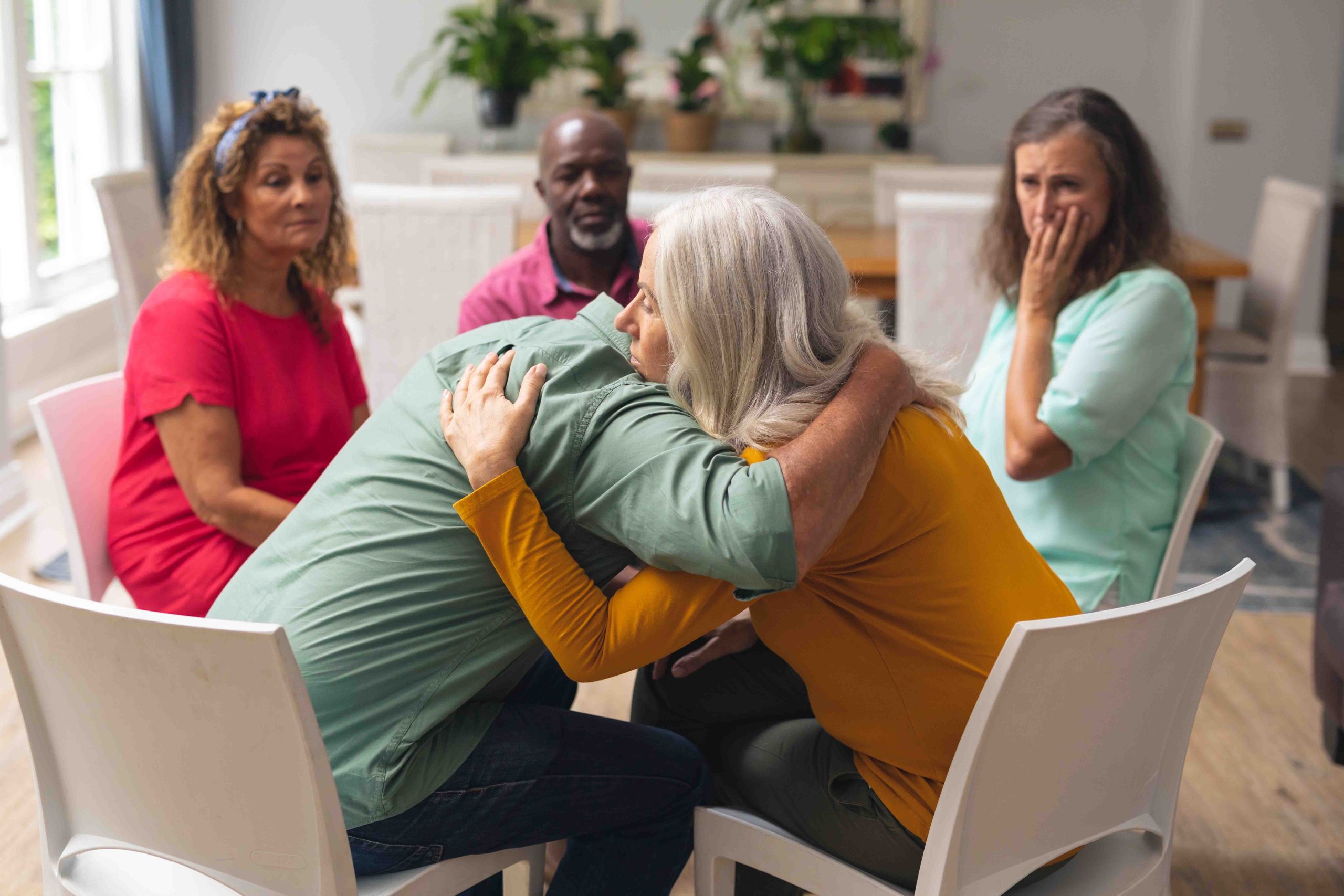
- Interpersonal or Experiential Group Psychotherapy: essentially, what is considered as "Group Therapy", these groups allow to review, recreate and modify established relational patterns that generate difficulties and problems.
- Self-Help Groups: such as, for example, Alcoholics Anonymous, are open groups led by already rehabilitated members, in many cases without professional training as therapists.
What is an addiction?
Finally, «addiction» remains to be defined. Addiction could be defined as the lack of control over the use, consumption or enjoyment of «something» to the point where it could be harmful to oneself. Addictions are most commonly associated with gambling, drugs, alcohol and smoking, but it is possible to be addicted to almost anything, including work, sex, the internet, shopping, etc. Being addicted to something means that not having it causes withdrawal symptoms or a «craving.» As this can be unpleasant, it is easier to continue having or doing it, and thus, the cycle is perpetuated.
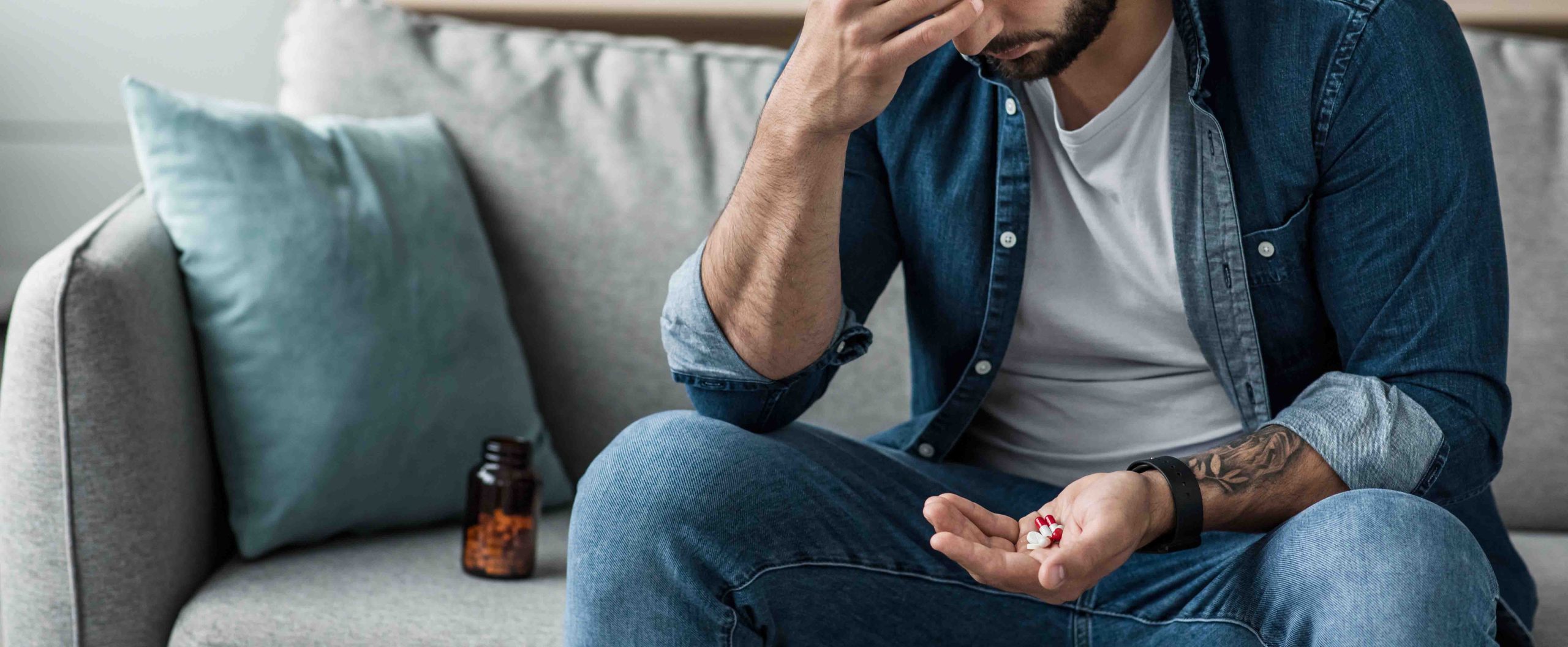
However, addiction itself never comes alone. Addiction has multiple travel companions, which become more present as the addiction grows stronger. Some of these companions are (but are not limited to): depression, anxiety, loneliness, denial, shame, impulsivity, character problems, social isolation, memory and concentration problems.
What are the benefits of Group Therapy in the treatment of addictions?
Group therapy has many advantages, as well as some risks. Any treatment modality (group therapy, individual therapy, family therapy and medication) can cause poor results if applied indiscriminately or if administered by an unqualified or poorly trained therapist. However, the potential drawbacks of group therapy are no greater than those of any other form of treatment. Below, I highlight some advantages of Group Therapy in the treatment of addictions:
- Groups provide positive peer support, as well as some pressure to refrain or control oneself. Group therapy generates a commitment on the part of all group members to attend, to be on time, and to treat the group time and process as something special. Failure to do so may lead to disappointment on the part of the group. Therefore, both peer support and pressure for abstinence are strong.
- Groups reduce the sense of isolation felt by most people with addiction problems. At the same time, groups encourage participants to feel identified and validated with others struggling with the same problems. Participation in group therapy increases their feelings of safety and enhances their ability to express themselves openly.
- Groups allow you to see firsthand and witness the recovery of others. This can be very inspirational, as many people with addiction problems lose hope of achieving abstinence.
- Groups help members learn to cope with addiction and other problems by allowing them to see how others cope with similar problems. Groups can enhance this process and extend it to include changes in the way group members relate to bosses, parents, spouses, siblings, children and people in general.
- Groups can provide useful information to clients who are new to the recovery process. For example, clients can learn how to avoid risky situations, the importance of abstinence as a priority, and how to set boundaries as a person in recovery.
- Groups provide feedback about group members' values, strengths, and skills. This information helps members improve their self-conceptions and modify negative and distorted self-concepts. This information, coming from several people, makes it much more effective in generating change.
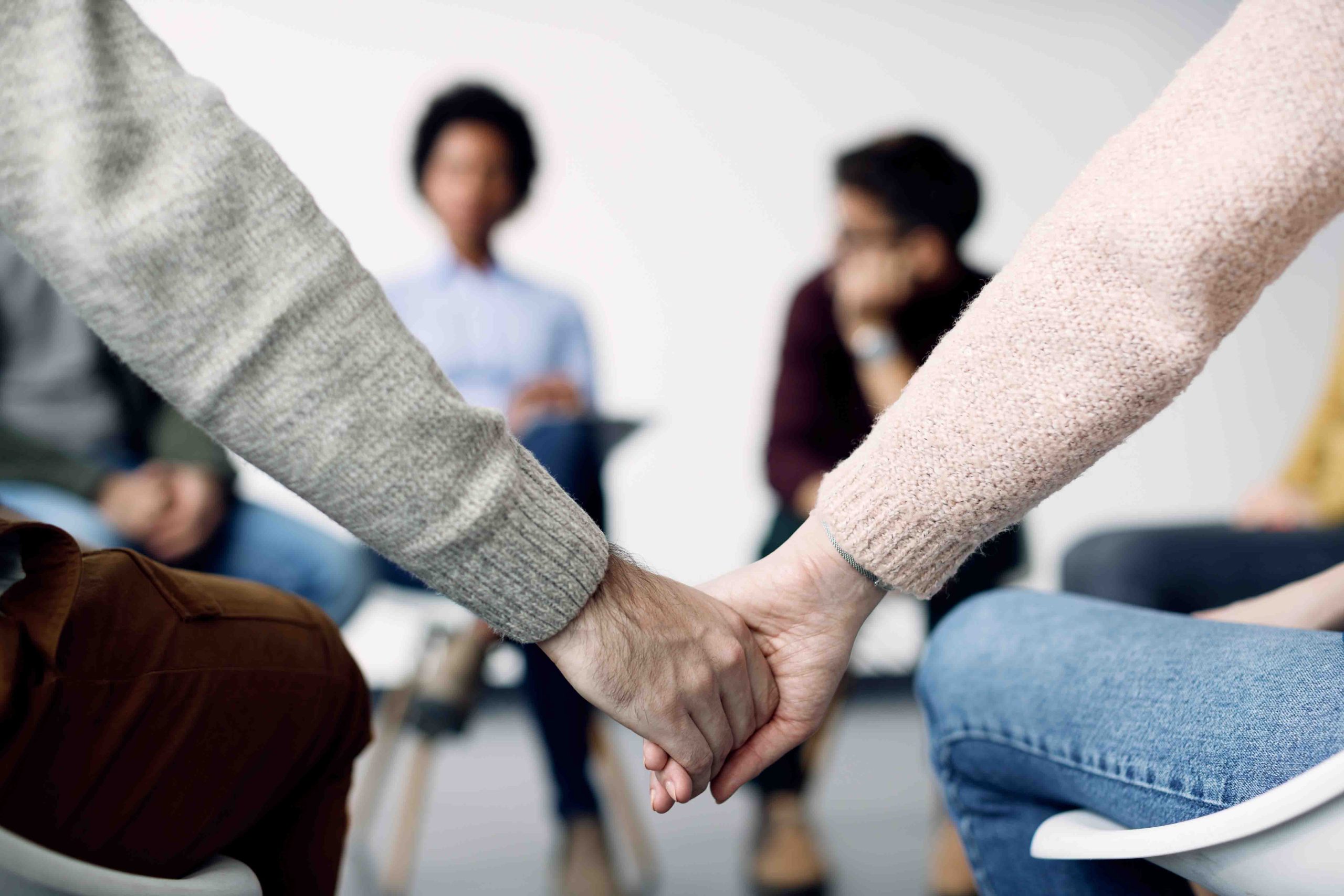
- Groups offer positive emotional experiences. Groups can provide the support and care that may have been lacking in the group members' families of origin. The group also gives members the opportunity to practice healthy ways of interacting with their families.
- Groups encourage, support and reinforce members to cope with difficult or anxiety-provoking situations.
- Groups create opportunities to learn or relearn the social skills they need to cope with everyday life.
- Groups can effectively confront members about risky behaviors, substance abuse and other harmful behaviors. Confrontation often plays an important role in addiction treatment groups because group members tend to deny their problems. Engaging in confrontation with one group member can help others recognize and defeat their own denial.
- Groups allow a single treatment professional to help several clients at the same time. Therefore, it may be a more cost-effective option.
- Groups can bring needed structure and discipline to the lives of people with addictions, who often enter treatment with their lives in chaos.
- Groups instill hope, a sense that "if someone else can make it, I can make it."
- Groups often support and encourage each other both inside and outside the group setting. However, in some group therapies outside contacts may not be allowed, depending on the contract or agreements of the particular group.
About the author:
Guillermo Gabarain Beristain is a Psychologist and Coach at SINEWS MTI with more than 15 years of experience, licensed in both Spain and the USA to practice as a psychologist, bilingual and with international experience. Trained in scientifically validated methodologies, such as Cognitive Behavioral Therapy, Solution Focused Therapy, Gottman Method of Couples Therapy, Crisis Prevention and Intervention, as well as in Humanistic and Systemic approaches. His main activity is focused on working with adults and couples, and he is specialized in the treatment of depression and anxiety disorders, complex grief, adjustment problems due to migration, substance use disorders and addictions, and couple problems.
Bibliography:
Alonso, A., and Rutan, J.S. The experience of shame and the restoration of self-respect in group therapy. International Journal of Group Psychotherapy38(1):3–27, 1988.
Yalom, I.D. The Theory and Practice of Group Psychotherapy. 4th ed. New York: Basic Books, 1995.
Wallace, J., and Blume, S., eds. Practical Approaches to Alcoholism Psychotherapy. New York: Plenum Press, 1978. pp. 19–29.
Vannicelli, M. Removing the Roadblocks: Group Psychotherapy with Substance Abusers and Family Members. New York: Guilford Press, 1992.
Toseland, R.W., and Siporin, M. When to recommend group treatment: A review of the clinical and the research literature. International Journal of Group Psychotherapy36(2):171–201, 1986.
Scheidlinger, S. The group psychotherapy movement at the millennium: Some historical perspectives. International Journal of Group Psychotherapy50(3):315–339, 2000.
Leshner, A.I. Introduction to the special issue: The National Institute on Drug Abuse’s (NIDA’s) Drug Abuse Treatment Outcome Study (DATOS). Psychology of Addictive Behaviors11(4):211–215, 1997.
Kanas, N., and Barr, M.A. Homogeneous group therapy for acutely psychotic schizophrenic inpatients. Hospital and Community Psychiatry34(3):257–259, 1983.
Brown, S., and Yalom, I.D. Interactional group therapy with alcoholics. Journal of Studies on Alcohol38(3):426–456, 1977.
Flores, P.J. Group Psychotherapy with Addicted Populations: An Integration of Twelve-Step and Psychodynamic Theory. 2d ed. New York: The Haworth Press, 1997.
Division of Psychology, Psychotherapy and Coaching
Psychologist
Adults and couples
Languages: English and Spanish
Why Stop Abusing Cannabis and What To Use It For?
Before explaining the characteristics of cannabis, its incidence, its effects and its complications, I would like to begin by relating a real case, since I have fortunately been dedicated to helping people with addictions for more than 10 years. If you use cannabis in any of its forms, I invite you to read it and express what you think. I don’t just want to describe in detail the hardships and negative consequences of cannabis use that this person suffered, but to describe the positive effects of stopping cannabis use. As a professional, this is what ultimately motivates me, and even still surprises me: to see the real potential of a person and how a drug can obscure it in such a way.
For this purpose, I introduce you to Mr. C, whose personal data and information will be omitted for confidentiality reasons. Like more and more teenagers, Mr. C started using cannabis early, at the age of 13. The first time was in the company of an older friend, who invited him to take a puff of a hashish joint. The first impression was positive, a few laughs and the feeling of doing something «grown-up». In a few months, the consumption became more and more frequent and high, and by the time he was 15 years old, he was smoking hashish and marijuana practically every day, an average of 2 or 3 joints a day. Of course, this consumption brought him some problems: conflicts with his parents, fights with other young people, some fines and even a trial for illegal drug possession.
Mr. C otherwise spent a «relatively» normal adolescence. He managed to finish junior high and high school with average grades and although he enjoyed history, and as a child he loved swimming, soccer and skiing, he spent virtually all of his adolescence sitting on the couch at home. In fact, his family teased that the couch had Mr. C’s deformity.
Around the time he was 20, Mr. C decided on his own volition to quit using hashish and marijuana, and to ask for help with it – this is where I come in. Undoubtedly, this cost him at first a few sleepless nights, some tough cravings (desire to use, anxiety, irritability, etc.) and having to stop hanging out with his friends, virtually all of whom were using as he had surrounded himself with «using buddies».
The more positive changes, perhaps less obvious to the naked eye, began to develop over the weeks and months. Mr. C, well known for his endless naps, his voracious hunger and his always astonishing quietness, began to change progressively. What until then seemed to be an acceptable but somewhat mediocre academic performance, turned into a genuine interest and motivation to study, learn and improve. In a few months, Mr. C became one of the most outstanding students in terms of intellectual and dialectical ability.
Likewise, Mr. C’s interests and activity level also showed significant changes, with Mr. C showing a greater motivation for self-care, physical exercise, and a more balanced diet. And to cap it all off, after several months of jaw-dropping improvements, Mr. C developed an interest in international travel, and during an extended stay in the Netherlands, established a very positive relationship.
Stopping the use of Cannabis ultimately allowed Mr. C to not only increase his performance capacity and daily activity, but perhaps more importantly, to learn about his own strengths, aptitudes and personality traits that were tarnished by the habitual use of this substance.
We may ask the question, what would things have been like, or what would Mr. C have accomplished or done, had he not used this substance during his teenage years? Like all «What if» questions, we will never know….
The question may lead us first of all to analyze the most notable effects of cannabis abuse. Without disdaining the therapeutic value, which exists and will also analyze, I will start by acknowledging the most notable and worrying risks of its abuse.
What is Cannabis?
Cannabis is a drug extracted from the Cannabis sativa plant, whose leaves, stems, flowers or resin are used to produce the most widely consumed illegal drugs in Spain, Europe and the world: marijuana and hashish. The plant contains more than 400 chemical components. The three most important cannabinoids, due to their psychoactive effects, are delta-9-tetrahydrocannabinol (THC), cannabidiol (CBD) and cannabinol. While THC is responsible for most of the effects, cannabinol is ten times less active than THC, and cannabidiol has a different profile, producing anxiolytic and sedative effects.
The best-known effects of cannabis on the brain are caused by its active ingredient, THC, which is found in different proportions depending on the form and mode of use. The most common forms of use include:
- Marijuana is the dark green substance obtained when the dried leaves, flowers and small stems of the plant are crushed.
- Hashish comes from the resin accumulated in the flowers of the female plant, and usually comes in balls or ounces, which is why it is commonly called "chocolate" in Spain.
- Hashish oil is the dissolved and concentrated hashish resin.
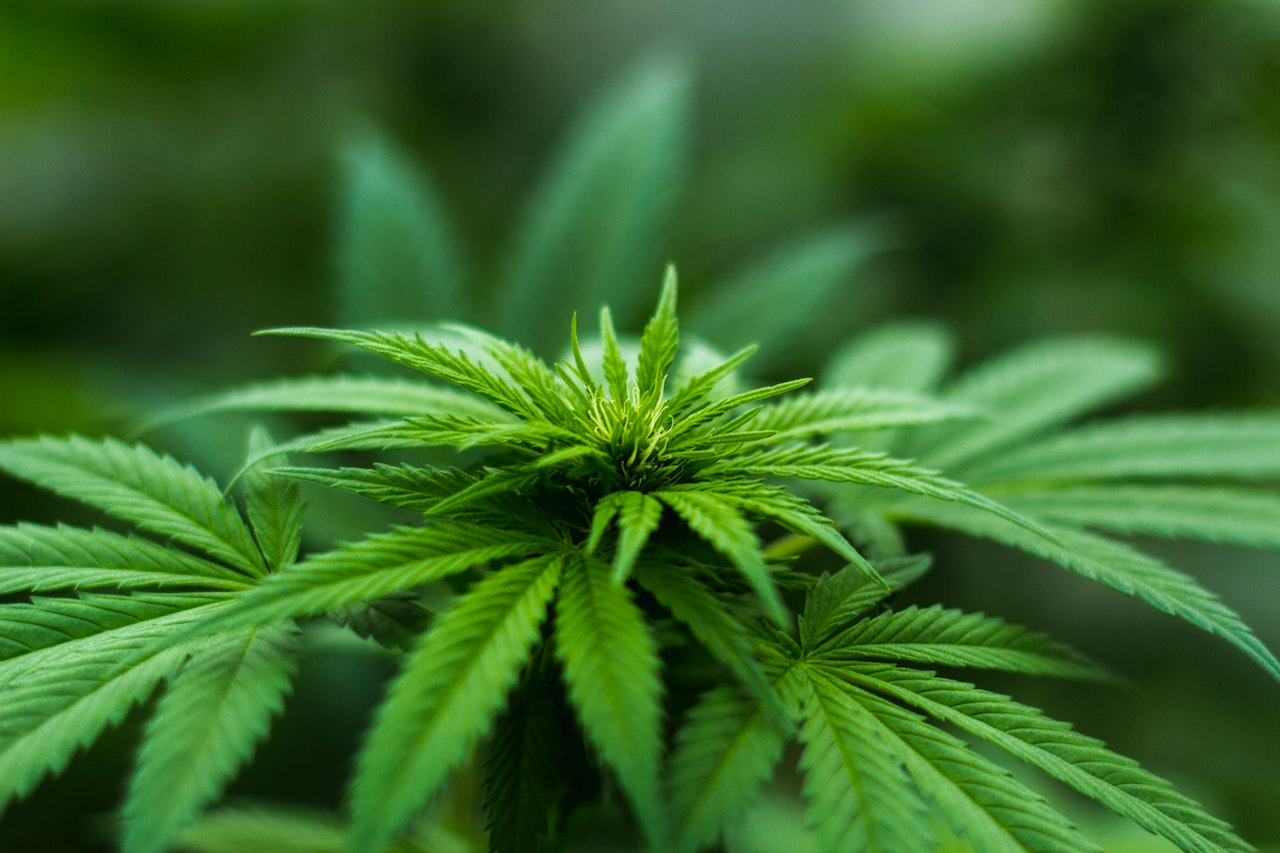
The most common way of consuming Cannabis is smoked in a cigarette (joint, joint, etc.). Its effects can be felt quickly, and can last between two and three hours. Of the total THC contained in a cigarette, between 10-25% reaches the blood. The final amount of THC absorbed in the body depends on the depth and number of puffs and the potency of the joints. It can also be consumed orally (oils, cakes, infusions, etc.) and absorption is slower.
Since 2008, the growth of «synthetic cannabinoids» has been detected in different parts of Europe, which have very similar effects. These synthetic compounds are commonly known as «Spice», which were initially distributed as legal products, but have also grown in the illegal market, leading to serious and deadly intoxications because they are often much more potent than THC.
What are some of the effects of cannabis abuse?
At the Neurological level, Cannabis mainly affects what we call the Endogenous Cannabinoid System in our brain. This area of our brain is in charge of regulating the functioning of our behavior, learning, gratification, appetite, pain and emotions, among others.
One of the most notable effects of cannabis abuse, for example, is what we call the «Amotivational Syndrome». This pattern refers to a combination of symptoms, including generalized lack of energy and activity, lack of motivation and initiative, tendency to drowsiness, altered short-term memory, and difficulties in concentration. This Amotivational Syndrome, which appears with more habitual and chronic consumption, is behind many of the problems in professional or academic performance, and certain tendencies to conflict.
Perhaps one of the most notable and dangerous risk of cannabis use, which I am still surprised by how unknown it is to a large part of the population, is the capacity to generate paranoid symptoms, panic attacks, and even psychotic outbreaks and schizophrenia. Of course, in these cases, the impact on the person’s life is very serious and the consequences can last for life or for a long period. I want to emphasize, that for these symptoms to occur it is not necessary to consume in an aberrant or chronic way, as there are cases of severe psychotic outbreaks after occasional consumption.
Other interesting facts about cannabis abuse:
- Cannabis is currently the second substance (28.4%) causing treatment admissions in Spain, behind cocaine (44.7% of the total) and followed by heroin (22.3%), being in many Autonomous Communities the first substance.
- Likewise, the percentage of hospital emergencies related to cannabis use has risen steadily, from 6.2% of episodes in 1996 to 50.6% in 2019. In other words, more and more hospital emergencies are related to hashish or marijuana use.
- 95.2% of all children under 18 years of age who have been admitted to treatment for illegal drug use in 2019 in our country, have done so for problems associated with cannabis use.
Can cannabis be medicinal or therapeutic?
In any case, not everything is negative with cannabis. Cannabis has been used since ancient times for very diverse purposes such as the use of its fibers for the production of fabrics and ropes, or the use as a food additive, making use of its oil and hemp seeds as a nutrient. It has also been used for its psychoactive properties for religious and/or recreational purposes, and occasionally to treat certain diseases. There is also evidence to support the medical use of THC to control nausea and vomiting, stimulate appetite and reduce pain. CBD can moderate the psychoactive effects of THC and has medicinal properties, for example, it reduces epileptic seizures. Several drugs containing cannabinoids have been authorized for marketing, such as ®Sativex, ®Marinol and Syndros, ®Cesamet and Canemes, and ®Epidiolex.
Division of Psychology, Psychotherapy and Coaching
Psychologist
Adults and couples
Languages: English and Spanish



